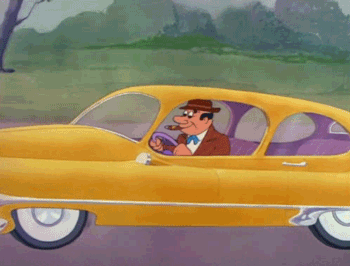Self-Drive Cars To Stop Bad Driving

Driving In America is Extraordinarily Dangerous
-
THE Cedar Creek Saloon, a bar an hour or so outside Houston, sits just off the freeway next to a clutch of motels, a barbecue restaurant and a petrol station. From anywhere nearby the only way to reach it, realistically, is by car. And yet on a Friday night it is packed with people happily smoking as they work their way through buckets of Bud Light. Not everyone is driving; but one patron, a little worse for wear, admits that not everyone drinking has a lift home. “People out here drink when they want to drink,” he says. And drunk-driving laws? “They don’t pay attention at all.”
Drunk-driving is just one of the perils of American roads. In 2014 some 32,675 people were killed in traffic accidents. In 2013, the latest year for which detailed data are available, some 2.3m were injured—or one in 100 licensed drivers. These numbers are better than a few decades ago, but still far worse than in any other developed country. For every billion miles Americans drive, roughly 11 people are killed. If American roads were as safe per-mile-driven as Ireland’s, the number of lives saved each year would be equivalent to preventing all the murders in the country.
In most of the rich world, far fewer people die in road accidents these days; cars are much safer than they were, with crumple zones, airbags, anti-locking brakes and adaptive cruise control. Use of seatbelts is widespread. But compared with other countries, America has not improved much. And in some ways things have been getting worse. For example, between 2009 and 2013 pedestrian deaths jumped by 15% as the economy recovered. In Britain, over the same period, the number fell by a fifth.
Many states are as safe to drive in as Europe: New Jersey, Rhode Island and Massachusetts all have low accident rates, for example. But in rural, sparsely-populated areas, where people drive long distances on long empty roads, the death rates can be shocking. In Wyoming in 2014, 131 people were killed in fatal crashes—a traffic-accident death rate higher than in most of sub-Saharan Africa. According to the Wyoming Highway Patrol, many deaths involve drivers who refuse to wear seatbelts.
Other risky behaviour is equally tolerated. As if roadside bars are not dangerous enough, in Louisiana drivers can stop at drive-through daiquiri joints to top up for the road. Across America, almost a third of traffic deaths involve alcohol. The number of motorcyclists killed each year has more than doubled since the late 1990s—mostly because there are more on the roads but also because, in 31 states, most adult bikers do not have to wear helmets.
Speed limits on highways in America can often seem low—a product of a law, now abolished, which imposed a national limit of 55mph. But faster roads are proliferating—in Texas, one stretch of toll road between San Antonio and Austin now has an 85mph limit. No clear link exists between speed limits and accidents, perhaps because speed limits are so widely flouted anyway. But the higher the speed, the more likely it is that an accident will be fatal.
A newer problem is mobile phones. A study in 2011 by the Centres for Disease Control found that 69% of American drivers had used their mobile phone at the wheel in the previous 30 days, and 31% had read or sent texts or e-mails. Among European countries, only Portugal was as bad. Just 14 states ban drivers from using hand-held phones while driving.
Perhaps most troubling, however, is changing street design. North-eastern cities are safer largely because they were laid out before the car was universal, says Jeff Speck, a city planner and author of “Walkable City”. But populations are growing far faster in sunbelt metropolises such as Houston, Tampa or Atlanta; and there, says Mr Speck, “engineers have been designing city streets like highways”, with multiple wide lanes of traffic and few obstacles. That encourages speeding, not a good idea in places also busy with pedestrians.
In places, change is coming. In many sprawling cities, the rise of cheap taxi services such as Uber and Lyft has helped to give drinkers other ways to get home. And bad road design is being improved. Florida, which by one measure has four of the five most dangerous cities for pedestrians in America, has promised to build friendlier roads. The trouble, says Chris Cochran of California’s Office of Traffic Safety, is that making driving safer tends to mean making it slower and more annoying. Drivers anywhere tend to dislike that.
